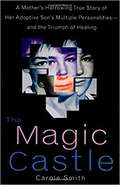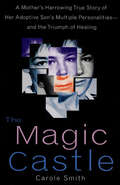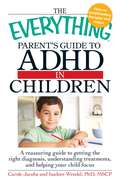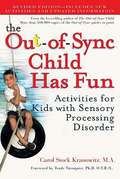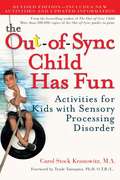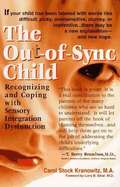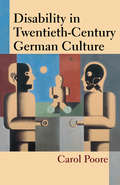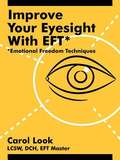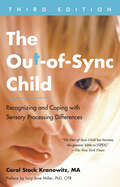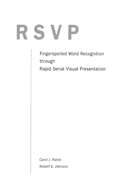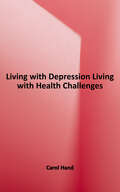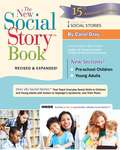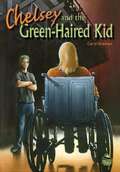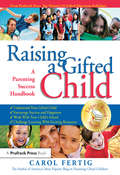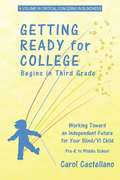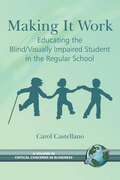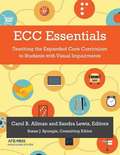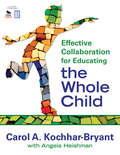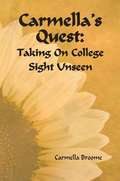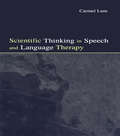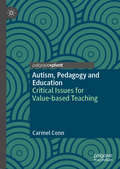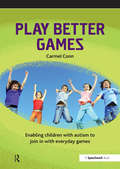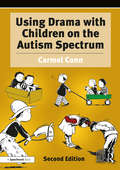- Table View
- List View
The Silver Bridle
by Caroline AkrillGrace Darling's acting career is managed from a corner table in a Soho Cafe. When she is sent for an audition for a starring role in a television serial she has no idea that the main requirement is riding ability and that her co-star is a horse. Can Grace bluff her way through the audition? Can she overcome the hostility of the fierce young man known in the business as The King of the Horsemasters? And most of all, when it comes to the crunch, can she really act?
The Magic Castle: A Mother's Harrowing True Story of Her Adoptive Son's Multiple Personalities and the Triumph of Healing
by Carole Smith"This is a true account of my experiences in successfully raising a child who suffered from multiple personality disorder. In writing the book, I have made extensive use of notes I took during therapy sessions and directly after encounters with alters, mental health personnel, a child placement organization, and the office of the district attorney. Occasionally, I have combined several similar events to avoid repetition. I was not present at the original incidents but I did observe many revivifications of the actual events. My belief in the truth of the personalities' revelations is based upon physical and circumstantial evidence and also occasional verification from witnesses. All of my encounters with the alters, including revivifications, have been accurately depicted and have not been exaggerated in any way. Many names, locations, and identifying details, including those of my family, have been changed or modified. The only names used in this book that have not been altered are those of Bill Conti, Dr. Steven J. Kingsbury, Dr. Nina Fish-Murray, Marie Párente, and Dr. Van der Kolk. The names of places and institutions that have not been changed are Boston Children's Hospital; Camp Wedicko; County District Attorneys Office; Massachusetts Department of Social Services; Massachusetts Mental Health Center; Mount Auburn Hospital; Northboro, Massachusetts; Robert F. Kennedy Residential School; and University of Massachusetts Acute Adolescent Psychiatric Unit at Westboro. As a final note, when he was thirteen years old, my son wanted to sever all connections to the perpetrators and asked to have his first, middle, and last names changed. I gave him an old family name of mine, my husband's middle name, and, of course, our last name. It is important that the reader know of these changes. However, throughout this book I have simply called him Alex."
The Magic Castle: A Mother's Harrowing True Story of Her Adoptive Son's Multiple Personalities—and the Triumph of Healing
by Carole SmithAlex Smith and his eight personalities were trapped in a world of unfathomable evil...until he entered the "magic castle" and found the key to his freedom.When Carole Smith and her husband decided to take in a foster child that no one else would have, they knew ten-year-old Alex would be difficult. But nothing had prepared them for the unruly, self-destructive boy who stormed into their lives. Alone with Alex during the day, Carole was baffled by his infantile tantrums and violent, self-hating behaviors. Exasperated, she tried relating to him as the two-year-old he appeared to be, and finally, a door to Alex's mind began to open.With the help of psychiatrist Dr. Steven Kingsbury, Alex's tormented mind revealed a host of personalities, each born in a horrifying episode of Alex's past-- each carrying a memory too powerful for his conscious mind to handle. As the personalities came forth in the safety of Alex's inner, secret castle, they unleashed stories of abandonment, brainwashing, and sexual abuse by those Alex trusted the most. In The Magic Castle, here is a fascinating true story of the human mind; of innocence shattered by inhuman cruelty; and ultimately of love's power to transform fragments into wholeness-- tragedy into triumph.
The Everything Parents' Guide to ADHD in Children
by Carole JacobsA roadmap to a common--but complicated--disorder.Is there a cure for ADHD?What symptoms should you be looking for?Could your child be misdiagnosed?When your child is diagnosed with ADHD, you want to do all you can to get the help you need to support your child. Unfortunately, the vast amount of information on ADHD can be overwhelming and leave you feeling frustrated, stressed, and powerless to help. But with the professional, accessible advice presented here, you can get the one-stop support you need to:Obtain and understand a diagnosisFind the right treatmentDiscipline your child effectivelyGet your child to focus at home and schoolStay positive, and encourage your childThis guide provides an all-encompassing look at ADHD so that you can feel confident about taking the necessary steps to create a better future for your child.
Female Forms: Experiencing and Understanding Disability
by Carol Thomas* What is the relevance of feminist ideas for understanding women's experiences of disability? * How can the social model of disability be developed theoretically? * What are the key differences between Disability Studies and medical sociology? In answer to these questions, this book explores and develops ideas about disability, engaging with important debates in disability studies about what disability is and how to theorize it. It also examines the interface between disability studies, women's studies and medical sociology, and offers an accessible review of contemporary debates and theoretical approaches. The title Female Forms reflects two things about the book: first, its use of disabled women's experiences, as told by themselves, to bring a number of themes to life, and second, the author's belief in the importance of feminist ideas and debates for disability studies. The social model of disability is the book's bedrock, but the author both challenges and contributes to social modelist thought. She advances a materialist feminist perspective on disability, producing a book which is of multi-disciplinary relevance. Female Forms will be useful to the growing number of students on Disability Studies courses, as well as those interested in women's studies, medical sociology and social policy. It will also appeal to those studying or working in the health and social care professions such as nursing, social work, occupational therapy and physiotherapy.
The Out-of-Sync Child Has Fun: Activities for Kids with Sensory Processing Disorder
by Carol Stock KranowitzThe first accessible guide to examine Sensory Processing Disorder, The Out-of-Sync Child touched the hearts and lives of thousands of families. Carol Stock Kranowitz continues her significant work with this companion volume, which presents more than one hundred playful activities specially designed for kids with SPD. Each activity in this inspiring and practical book is SAFE--Sensory-motor, Appropriate, Fun and Easy--to help develop and organize a child's brain and body. Whether your child faces challenges with touch, balance, movement, body position, vision, hearing, smell, and taste, motor planning, or other sensory problems, this book presents lively and engaging ways to bring fun and play to everyday situations. This revised edition includes new activities, along with updated information on which activities are most appropriate for children with coexisting conditions including Asperger's and autism, and more.
The Out-of-Sync Child has Fun: Activities for Kids with Sensory Processing Disorder
by Carol Stock KranowitzThis companion volume to The Out-of-Sync Child presents activities that parents of kids with Sensory Integration Dysfunction can do at home with their child to strengthen their child's abilities and have some fun together along the way.
The Out-of-Sync Child: Recognizing and Coping with Sensory Integration Dysfunction
by Carol Stock Kranowitz"Difficult." "Picky." "Oversensitive." "Clumsy." "Unpredictable." "Inattentive." Children who have been labeled with words like these may actually be suffering from Sensory Integration Disorder--a very common, but frequently misdiagnosed, condition that can manifest itself in excessively high or low activity levels, problems with motor coordination, oversensitivity or undersensitivity to sensations and movements, and other symptoms. This guide, written by an expert in the field, explains how SI Dysfunction can be confused with ADD, learning disabilities, and other problems, tells how parents can recognize the problem, and offers a drug-free treatment approach for children who need help.
Disability in Twentieth-Century German Culture
by Carol PooreDisability in Twentieth-Century German Culture covers the entire scope of Germany's most tragic and tumultuous century---from the Weimar Republic to the current administration---revealing how central the notion of disability is to modern German cultural history. By examining a wide range of literary and visual depictions of disability, Carol Poore explores the contradictions of a nation renowned for its social services programs yet notorious for its history of compulsory sterilization and eugenic dogma. This comprehensive volume focuses particular attention on the horrors of the Nazi era, when those with disabilities were considered "unworthy of life," but also investigates other previously overlooked topics including the exile community's response to disability, socialism and disability in East Germany, current bioethical debates, and the rise and gains of Germany's disability rights movement. Richly illustrated, wide-ranging, and accessible, Disability in Twentieth-Century German Culture gives all those interested in disability studies, German studies, visual culture, Nazi history, and bioethics the opportunity to explore controversial questions of individuality, normalcy, citizenship, and morality. The book concludes with a memoir of the author's experiences in Germany as a person with a disability.
Improve Your Eyesight with Eft*: *Emotional Freedom Techniques
by Carol LookBased on an experiment conducted by EFT Master, Carol Look, "Improve Your Eyesight with EFT" invites you to improve your vision by releasing pent up emotions stored in your eyes. Emotions such as fear, guilt, anger and shame show up in every other part of our anatomy and physiology, why not in our eyesight? Considering that few doctors or lay people even entertain the idea that our eyesight could be improved by balancing our energy system with a simple method such as Emotional Freedom Techniques (EFT), the final results of the experiment were nothing short of fantastic. Approximately 75% of participants reported between a 15-75% improvement in their vision. . just from tapping on acupressure points while focusing on their emotions! EFT is the ideal tool to address emotional blocks that have been preventing you from seeing clearly.
The Out-of-Sync Child, Third Edition: Recognizing and Coping with Sensory Processing Differences (The Out-of-Sync Child Series)
by Carol KranowitzNewly expanded and revised with essential updates and insights, the third edition of this definitive guide delivers new information on sensory processing disorder and differences (SPD). &“The Out-of-Sync Child has become the parents&’ bible to [SPD].&” —The New York Times Does your child experience sudden bursts of anxiety, agitation, or discomfort, or appear sensitive or sensory-craving without explanation? Is your child clumsier than most children, or unable to discriminate between ordinary sounds, sights, and other sensations? Sensory processing differences, in which the central nervous system misinterprets messages from the senses, are common yet widely undiagnosed in young children today. Often overlooked or undiagnosed, SPD impacts thousands of children from all walks of life. This latest edition of Carol Kranowitz&’s renowned and practical guide for parents, teachers, and professionals offers authoritative, research-based information on recognizing SPD and comprehending the diagnosis, and important advice on how to help kids and families cope and thrive. Delivering comprehensive guidance and drug-free interventions, The Out-of-Sync Child is a trusted resource for parents and professionals who want to understand and ease the challenges of living with SPD.
Fingerspelled Word Recognition through Rapid Serial Visual Presentation
by Carol J. Patrie and Robert E. JohnsonRSVP can be used in the classroom or for self-study. Learning and practicing this extensively researched approach is the key to unlocking the mystery of understanding fingerspelling. [Carol J. Patrie, Robert E. Johnson; (2011) Book: 185 pages; soft cover; coil bound, CD-ROM, DVD: 187 minutes; no audio; Mac OS X 10.6; PC Windows 7] Item not returnable once opened. The book explains the form and function for the types of fingerspelling: careful, rapid and lexicalized.
Living with Depression (Living With Health Challenges Set 2)
by Carol HandLiving with Depression features fictional narratives paired with firsthand advice from a medical expert to help preteens and teenagers feel prepared for dealing with depression during adolescence. Topics include causes and risk factors, complications, tests and diagnosis, treatment methods, coping strategies, and giving and getting support. Throughout the book, Ask Yourself This questions encourage discussion. Features include a selected bibliography, further readings, Just the Facts summary of medical facts about depression, a where-to-turn summary of key advice that includes contact information for helpful organizations, a glossary, source notes, and an index. Aligned to Common Core Standards and correlated to state standards. Essential Library is an imprint of Abdo Publishing, a division of ABDO.
The New Social Story™ Book Revised and Expanded 15th Anniversary Edition
by Carol GraySince the early 90s, Carol Gray's world-famous Social Stories have helped thousands of children with autism spectrum disorders. This 15th Anniversary Edition of her best-selling book offers ready-to-use stories that parents and educators have depended on for years, and new sections added are: How to most effectively use and apply the stories; How to improve the lives of younger children; and Social Stories for teens and adults with autism. Developed through years of experience, these strategically written stories explain social situations in ways children and adults with autism understand, while teaching social skills needed for them to be successful at home, school, work, and in the community.
Chelsey and the Green-Haired Kid
by Carol GormanConvinced that the fatal accident she witnessed at the basketball game was not accidental, thirteen-year-old Chelsey, a paraplegic, and her unusual friend Jack join forces to prove it was a deliberate murder.
Raising a Gifted Child: A Parenting Success Handbook
by Carol FertigFrom the author of the nation's most popular blog on parenting gifted children comes the definitive how-to manual for parents, Raising a Gifted Child: A Parenting Success Handbook, a gifted education Legacy Award winner. Raising gifted children isn't easy, but when armed with the practical knowledge and tools in this exciting book, parents can navigate the maze of raising bright kids, leading to success in school and beyond. This book offers a large menu of strategies, resources, organizations, tips, and suggestions for parents to find optimal learning opportunities for their kids, covering the gamut of talent areas, including academics, the arts, technology, creativity, music, and thinking skills. The focus of this definitive resource is on empowering parents by giving them the tools needed to ensure that their gifted kids are happy and successful both in and out of school.Additional topics covered include volunteering at their child's school; different school options and specialty programs; tips for handling special circumstances; specific suggestions for each core content area; and strategies for finding the best resources for parents on the Web. This easy-to-read book is sure to be a favorite of parents of smart kids for years to come!Educational Resource
Getting Ready for College Begins in Third Grade: Working Toward an Independent Future for Your Blind/Visually Impaired Child (Critical Concerns in Blindness)
by Carol CastellanoAll parents hope for an independent future for their blindvisually impaired child. To turn that hope into a reality, parents need to understand the scope of skill development that must be addressed, along with the importance of equal expectations for the child's development, proper training, and opportunity to practice and develop skills. But what if expectations are low, training in blindness skills is scanty or even absent, and overprotection prevents the blindVI child from learning and practicing skills? The idea of an independent future can remain a distant dream. The purpose of this book is to guide parents and teachers in fostering the blindvisually impaired child's skill development in such critical areas as academics, independent movement and travel, social interaction, daily living, and self-advocacy, so that he or she will truly be on the road to an independent future. A practical, easy to use guide, written in plain English, the book warns about common problem areas and provides ideas for getting and keeping the child's education and development on track. It highlights the interplay between skills and competence, confidence, self-respect, and the respect of others. Of the small number of books and videos available on the subject, most were written by professionals in the field and many begin with the supposition that blindness is at best sad and at worst tragic. Few --maybe none --have the ardent passion for independence that the parent of a blindvisually impaired child brings to the subject. Instead of overwhelming parents and teachers with the difficulty of the undertaking before them, Getting Ready for College Begins in Third Grade will inspire their confidence and enthusiasm for the task at hand.
Making It Work: Educating The Blind/Visually Impaired Student in the Regular School (Critical Concerns in Blindness Series)
by Carol CastellanoMaking It Work is destined to be the definitive guide for years to come on how to make the regular school education a successful experience for blind/visually impaired children. With chapters flowing logically and full of detailed, useful information, it will be an essential handbook for school staff, specialized service providers, and parents of blind/visually impaired children. This is an exquisite, enlightened guide for the education of blind/visually impaired children in the new millennium.
ECC Essentials: Teaching The Expanded Core Curriculum To Students With Visual Impairments
by Carol B. AllmanThe book discusses the nine ECC content areas along with relevant assessments, the important roles of teachers of students with visual impairments as well as their students' parents, and learning activities and resources.
Effective Collaboration for Educating the Whole Child
by Carol A. Kochhar-Bryant Angela S. HeishmanEducate the whole child by building a culture of collaboration in your school! This book for K–12 general and special education teachers, administrators, and student support specialists explores how to make collaboration and coordination work, who takes responsibility for the process, and why collaboration is central to improving outcomes for students with complex learning needs. The author: Discusses the roles, responsibilities, and relationships between school professionals, community agencies, and service providers Offers case examples as real-world illustrations of collaboration Emphasizes important developmental transitions from the elementary years through high school and after
Carmella's Quest: Taking on College Sight Unseen
by Carmella BroomeThe author, who is blind, describes her years at North Greenville College.
Scientific Thinking in Speech and Language Therapy
by Carmel LumSpeech and language pathologists, like all professionals who claim to be scientific in their practice, make a public commitment to operate on the basis of knowledge derived in accordance with sound scientific standards. Yet students in communication disorders are given relatively little grounding in the fundamentals of science; indeed, they often receive implicit encouragement to rely on clinical wisdom. This pathbreaking text introduces the principles of critical scientific thinking as they relate to assessing communication problems, deciding about alternative approaches to intervention, and evaluating outcomes. The author provides many illustrative examples to help readers contextualize the ideas. Her clear presentation will help not only undergraduate and graduate students but also established professionals reason more effectively about what they are doing and why. Though the examples come from speech and language pathology, this illuminating and readable book constitutes a valuable resource for all clinical practitioners.
Autism, Pedagogy and Education: Critical Issues for Value-based Teaching
by Carmel ConnThis book discusses critical issues concerning autism and education, and what constitutes effective pedagogy for this group of learners. Autism is a high-profile area within the discipline of special education, and the issue of how to teach autistic learners remains a contested one: recent theorising has questioned a techno-rationalist approach that places the burden of change on the autistic pupil. The author explores the values that underpin educational approaches within existing pedagogical practice: while these approaches have their individual merits and shortcomings, this book introduces and expands upon a strengths-based approach. This book will appeal to students and scholars of autism and education, with particular regard to teaching autistic learners.
Play Better Games: Enabling Children with Autism to Join in with Everyday Games
by Carmel ConnOrdinary games are an important vehicle for children's learning. They provide a powerful, naturally occurring learning environment that is physical, playful and fun. Playing games requires interpersonal skills in language, thought, social behavior, creativity, self-regulation and skilful use of the body. When children play games together they develop the following key capacities:•Cooperative behavior•Focused attention•Social understanding•Holding information in mind•Motor, spatial and sequential planning•Self-regulation, e.g impulse control, coping with excitement, controlled exertion•Collaborative behavior and negotiation•Self-expression and creativity.Games provide a social experience that is emotionally compelling, where children laugh and have fun and do not realise they are interacting, problem solving, negotiating and cooperating with each other.Play Better Games is designed to help practitioners and parents to think about what might prohibit their children from joining in with games and plan effective strategies for support. It will be of benefit to teachers, therapists, group works, play workers, midday supervisors and support workers, as well as to parents and siblings of children with autism.
Using Drama with Children on the Autism Spectrum: A Resource for Practitioners in Education and Health
by Carmel ConnThe second edition of Using Drama with Children on the Autism Spectrum takes the perspective that support for the learning and development of children should have the purpose of giving them the freedom to be more fully who they are and able to function more effectively as themselves in a wider range of contexts. The focus of this new edition is on learning outcomes as expressed by autistic people, for example, to develop better understandings about the social world and to know how to manage everyday situations more successfully. This practical resource book contains more than 150 activities for use with children aged 5–11 years old. Written for mainstream and special education teachers, speech and language therapists, drama teachers, play workers and creative arts therapists, the book shows how using drama with children across the autism spectrum can provide valuable experiences in being with others and communicating with them in enjoyable ways that support the development of well-being and confidence. In addition, drama is presented as a rich medium for reflecting on everyday social situations and developing children’s understandings about the social world. Complete with case studies, photocopiable resources and step-by-step guidance on how to facilitate drama activities that all children can enjoy, this practical resource will be invaluable for those who are looking for new ways of engaging children on the autism spectrum and their peers. The second edition of this practical resource has been extensively revised, updated and re-focused in line with current practice and thinking.

